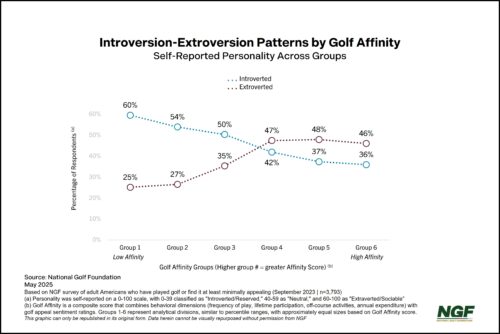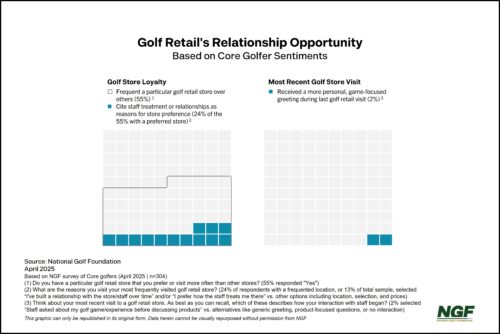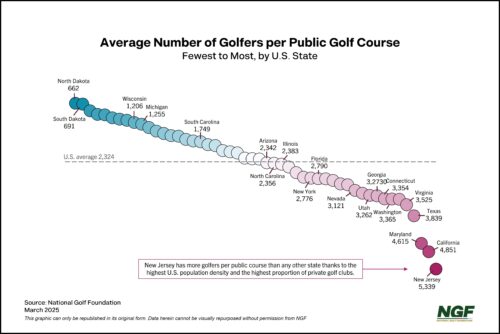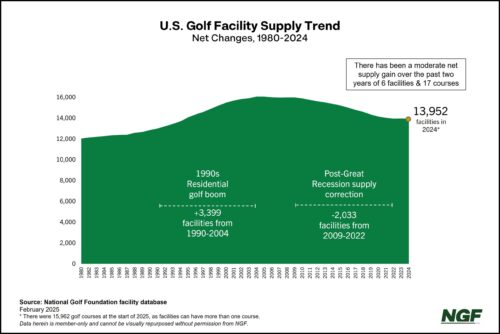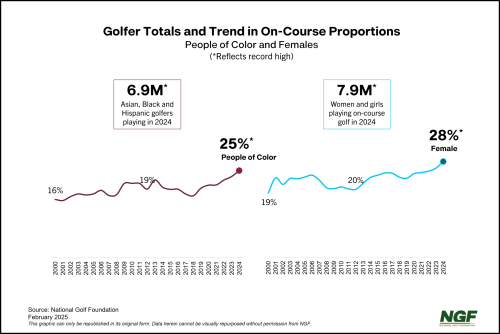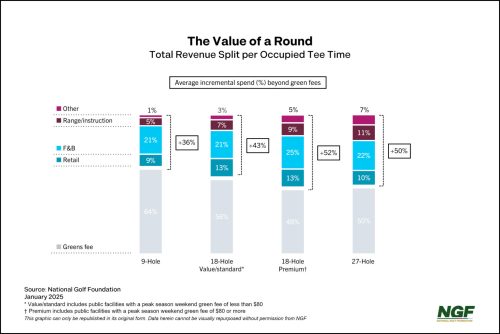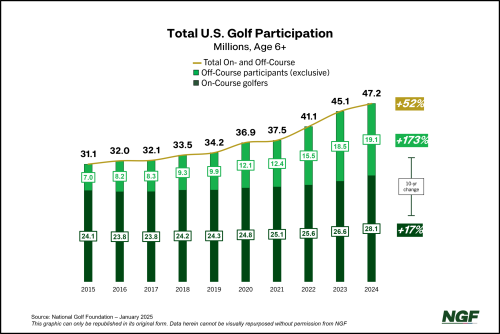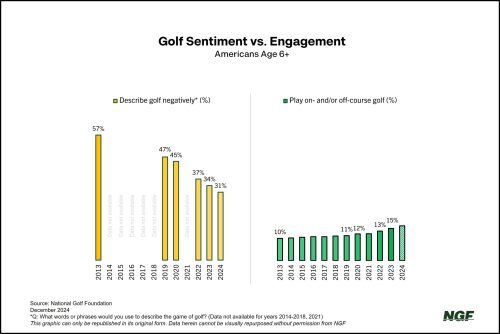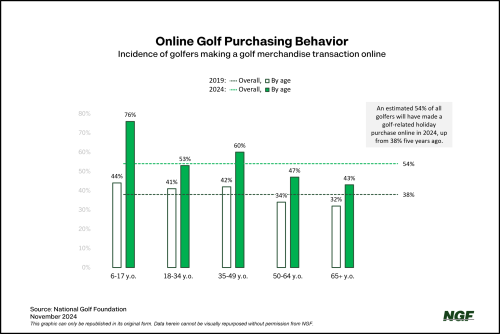3-Minute Business Insights
Short Game
How can the imagery used in golf media and marketing create meaningful barriers to both initial and deepening engagement? And might the consequences of our historically-narrow view influence experience design itself?
The past three years have seen record or near-record numbers of U.S. golfers traveling to play the game. What does that mean for the industry at large when it comes to the "travel window" effect?
Topic: Associations
If golf is supposed to be a relationship business, why are golfers greeted in pro shops and retail stores with generic transactional questions typically answerable with a single word?
The Masters Tournament has cultivated one of the most passionate followings in any industry. It's a phenomenon worthy of attention, especially as the golf industry more broadly examines strategies that can build enduring loyalty -- without points or perks.
As the golf industry enjoys unprecedented success, NGF research suggests most Core golfers feel like "just another customer," with transaction-based relationships emphasized over loyalty. As customer expectations evolve, relationship-building will likely emerge as the most undervalued innovation frontier in business and, perhaps, a new battleground in golf.
Amid recent increases in participation and play, it isn’t uncommon to hear some golfers lamenting greater limitations on tee time availability. So when it comes to public golf access, where is demand at the highest levels?
U.S. golf course development and investment in existing faciltiies are up, including an increased number of renovations, reconstructions, and resurrections. Meanwhile, the number of annual course closures has decreased for five straight years, with the 2024 total dipping to its lowest levels in two decades. The result is a supply stability that has legs.
The face of golf may have changed more in the past five years than the previous 50. Golf’s latest participation numbers are out and they reveal unprecedented diversity in the game -- both on and off the course.
When a tee time goes unfilled, a golf course doesn’t just lose the greens fee – it loses all the revenue accompaniments that would have come with it. It’s why we dove deeper into the concept of RevPOTT, or the estimated total revenue per occupied tee time at public golf facilities.
NGF's annual state-of-industry report is out and available for members, providing a holistic look at the U.S. golf industry for 2024. Momentum across the recreational side of the U.S. golf industry remained broadly positive this past year, and future indicators point to sustainability when it comes to participation and play.
Recreational golf has enjoyed a renaissance in the post-pandemic era – with increases in participation, play and engagement – and a key driver has been an increasingly positive narrative surrounding the game. Perceptions of golf and golf’s brand have shifted dramatically over the past decade or so, and social media has helped lead the charge.
Approximately half of Core Golfers say golf gifting is a part of their holiday routine. And whether through a specialty golf retailer or a channel like Amazon, a growing percentage are buying golf-related items online.

